In busy cities, shopping centers and residential areas, parking systems have a major role for your vehicle safety. Sometimes, it can be confusing for you how you can park in a specific area.
As a driver, you should know all different types of parkings. So, you can choose the right location and legally park your car. Today, we will tell you every possible way of parking, their purpose and rules.
What is Parking?
Parking is the space that you can use to leave your car for a shorter or longer period when the car is not in use. You can also name it the rest area for your cars, where they can stay for the desired time period.
Parking is a crucial component of urban transportation systems. It helps manage traffic flow and provides space for cars and other vehicles to park when not in use.
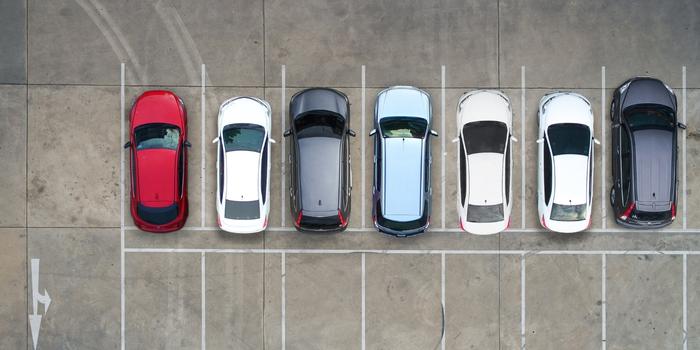
List of 20 Parking Types
Underground Parking
A modern parking solution in which the parking space is built under the ground level. This type of parking system is common in big malls, hospitals, banks and other corporate places.
It is an advanced solution in urban areas, where space is limited. These parking lots are quite safe and are normally built in a multi-level basement style. They need high initial investments.
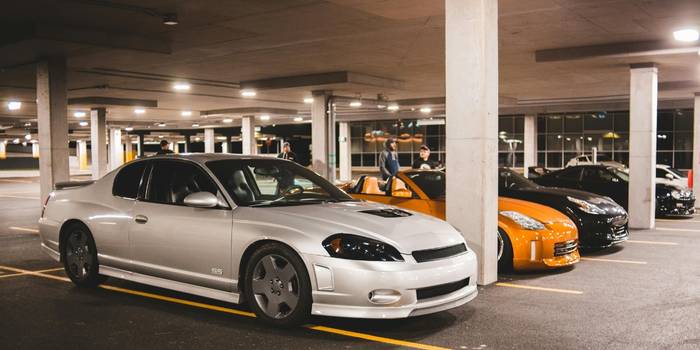
Multi-storey Parking
As the name suggests, it is an advanced parking solution in which multi-storey buildings are constructed to accommodate hundreds of cars in a single place. This parking facility can range from 2 to 10 stories. The access is through a ramp or a lift-based access is also common in such buildings.
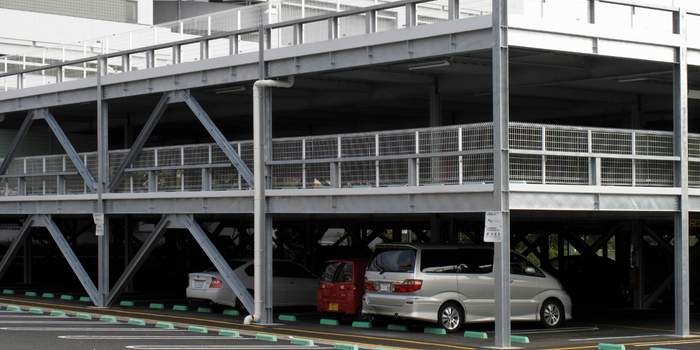
Off-street Parking
Off-street parking is a concept in which vehicles are parked at a location other than the street. In congested areas, some places are reserved for parking, like a parking lot, parking garage or driveways. The allocated parking spaces avoid the traffic rush on the streets & provide a more organized system to manage the traffic flow.
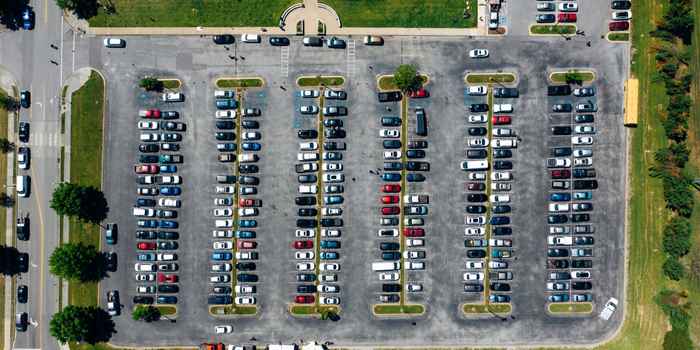
Also Read: The Ultimate Guide to Stopping Parking Space Theft With Parking Locks
On-street Parking
It is a typical parking solution in which cars are parked along the roadside in designated spaces. This parking system allows easy access to the shopping centres, shops, restaurants and other such places. You always face a challenge in managing traffic flow in the case of on-street parking.
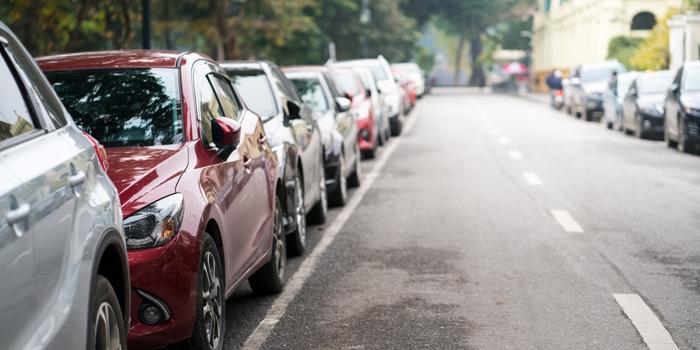
Residential Parking
Residential parking is reserved for vehicles used by residents. It could be a home garage, a combined parking slot for apartments or street parking reserved for a specific society or a specific number of houses. This system is useful for managing normal traffic flow in the area and provides security to residents.
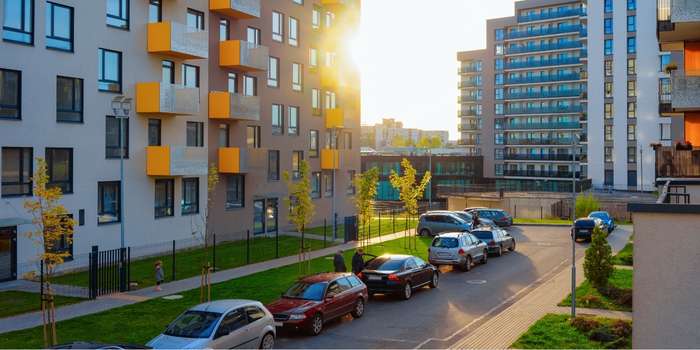
Above-ground Parking
Above-ground parking is important in urban areas where space is limited to manage such a huge number of vehicles. So, an above-ground parking space is built in the form of multi-storey parking or a parking lot above the building. Some restaurants and shopping malls provide a pathway to move to the top for parking your car.

Ground Floor Parking
The simplest and easiest parking system is ground-floor parking, where the vehicles are parked in the allotted space and you can easily access your desired place. It can be an open ground-floor parking or a covered ground-floor parking, depending on the needs and budget.
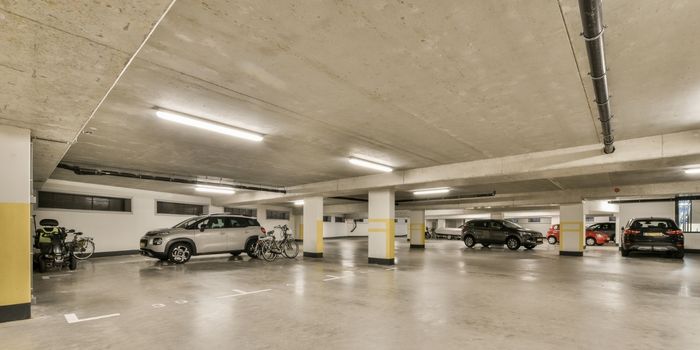
Semi-basement Parking
It is slightly below the ground level and sometimes you may face some sunlight in the parking slot. You don’t need to provide a proper ventilation system, as it is not a multi-level basement. These types of parking are common in hospitals and other important places.

Undercroft Parking
This is a special type of parking which is constructed on the ground level beneath the main building. The commercial or residential activities in the building start from the first floor and the ground floor is reserved for parking. This type of parking is common in residential apartments and commercial offices.
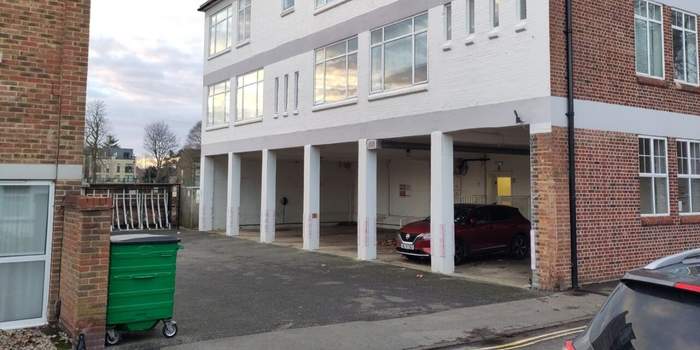
Mechanised Parking
Mechanised parking is an advanced system where you just park your car at a designated place and the mechanical or robotic system itself parks the car in a defined parking slot. This system is useful in urban areas where multi-level auto parking systems are used. It is a safe and sound parking system where human intervention is minimal.
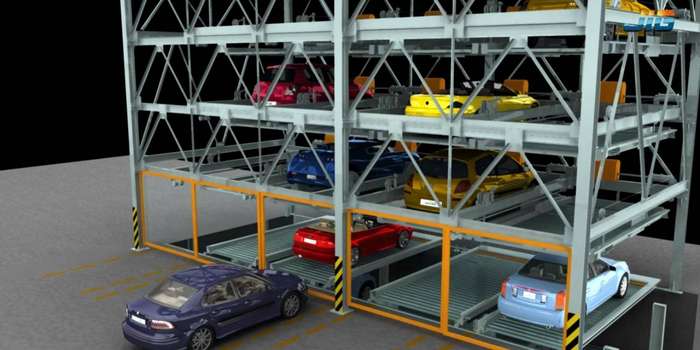
Angled Parking
Angled parking is a concept where cars are parked alongside the road at a specific angle, like 30 degrees, 45 degrees & 60 degrees. This parking system can absorb more cars and it is also easy for beginners to get in and out of the parking space.
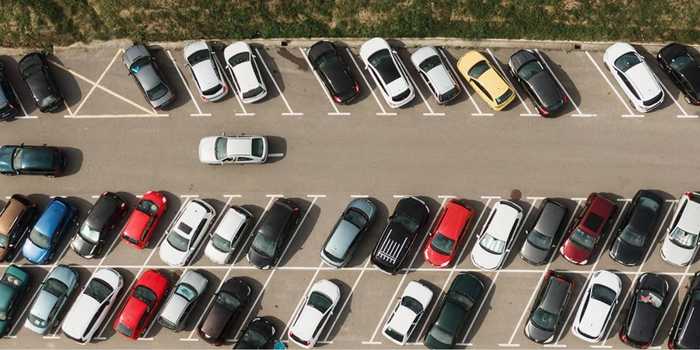
Bay Parking
This is a parking system where cars are parked strictly under the marked lines(bay). The bay can be at 90 degrees to the road or angled, depending on the requirement and local laws. It may be perpendicular bay parking or angled bay parking.
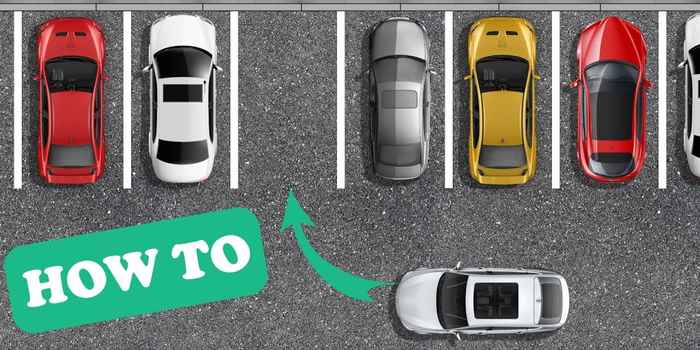
Parallel Parking
The parallel car parking is a way to park your car parallel to the road side. In this type of parking, a driver has to adjust his/her car between the two cars by using driving skills. This type of parking is used to manage the traffic flow better in urban areas where the space is limited.

Helpful Topic: How to Set Up Cones for Parallel Parking? – Step-by-Step Guide
Perpendicular Parking
One of the most common parking types is where cars are parked at 90 degrees to the road. The cars are usually side by side and more cars can be accommodated in such parking style. This type of parking requires space to turn back and then safely enter into the parking space. You will see such parking in front of hospitals, shopping malls & other crowded places.
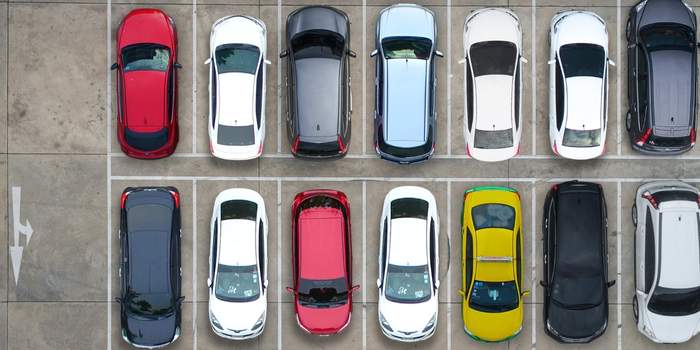
Oblique Parking
A special type of parking in which the cars are parked at an angle of 30 degrees, 45 degrees or 60 degrees, depending on the space and the dimension of traffic flow. You can easily enter or exit from the parking slot.
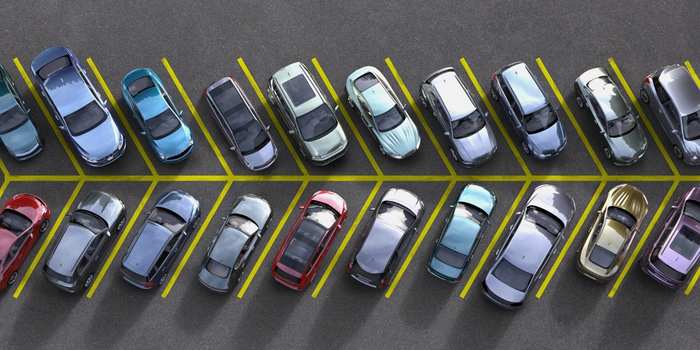
- 30 Degree Parking
It is the easiest angle to park your car without turning too much. Ideal for one way traffic and safe for your vehicle.
- 45 Degree Parking
Another easy angle for car parking where you can fit your car without so much hassle. More cars can park by using a 45-degree angle.
- 60 Degree Parking
It is also used widely to park your car at 60 degrees. It is a combination of driver’s ease and also accommodates more cars than 30 and 45-degree angles.
Diagonal Parking
It is a driver-friendly parking where the cars are usually parked at angles, including 30 degrees, 45 degrees, 60 degrees or 75 degrees. In this parking type, the flow of traffic is not disturbed and the angle is decided according to the traffic flow and road space.
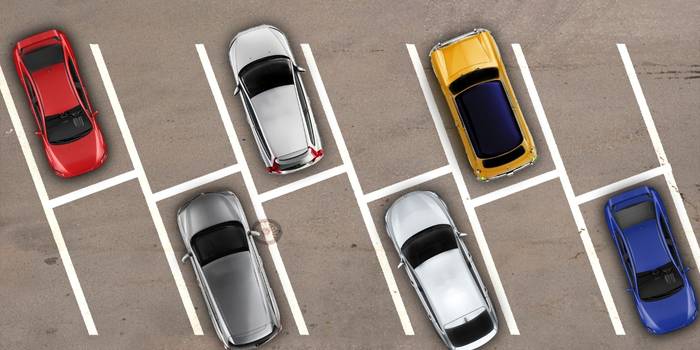
Head-In Parking
In this system of parking, the head/front of the car is towards the roadside and the back is toward traffic. You can easily park your car by heading straight into the parking slot, rather than parking the car by reversing it and adjusting in the space. However, you can feel difficulty when reversing at the time of exit.
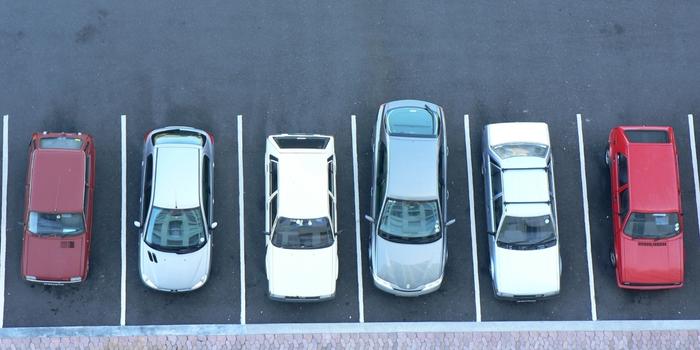
Back-In Parking
It is opposite to the head-in parking and you have to park your car by reversing it and adjusting in the parking slot. You may feel difficulty entering the car in the parking lot; however, you will find it very easy at the time of exit and you can see the traffic flow without any hindrance.

Garage Parking
The garage parking is one of the most secure parking for your vehicle, as it provides a fully safe and sound space. It can be either a house garage or a garage in the apartment for personal use or on a sharing basis. They are common in residential areas and commercial places.
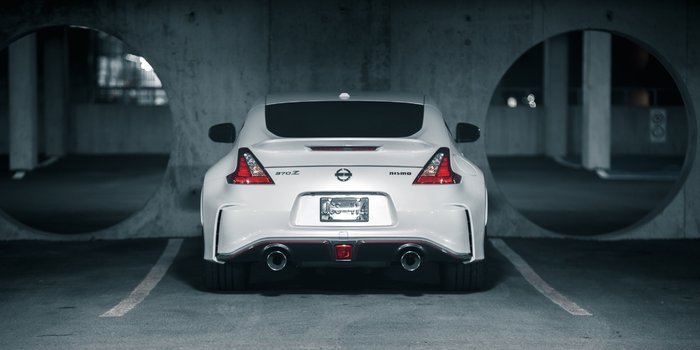
Pull Through Parking
Another concept of parking is where you will park your vehicle where the front end is empty and you can exit the parking by moving forward, rather than reversing. In the pull-through parking system, you will have a space in front of cars. It is common in big malls.
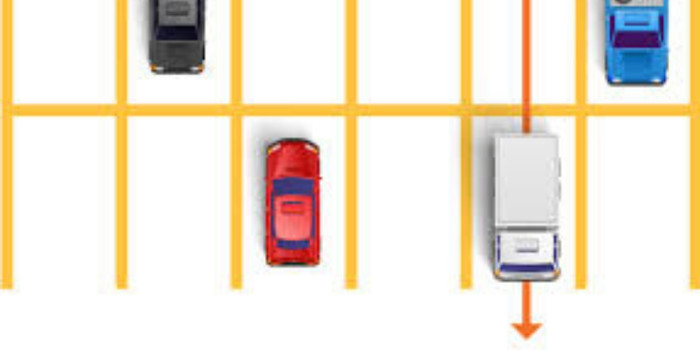
Types of Parking Systems
Puzzle Parking System
It is like a puzzle game where the whole structure moves vertically or horizontally to adjust your car at the empty parking slot. You just have to place your car at a designated place and it will be adjusted according to the number of cars.
Similarly, when you want your car back, it will be in the same place. This system is totally automatic & run by machines.
Stacker Parking System
This system is semi-automatic or fully automatic, depending on the type and advancements in this parking system. In this parking system, you just have to place your car on a hydraulic or electric platform and it will take your car to the upper level leaving the space empty for the next car. Ideally fit where the space is limited.
Shuttle Parking System
One of the most advanced car parking systems is the shuttle parking system. It is fully automatic where you have to place your car at the entry point and then the platform moves itself either vertically or horizontally and park your car at the desired slot. When you require your car, the system brings back the car at the exit point.
Crane Parking System
In this fully automated multi-level car parking system, you just have to place your car at the entry point. Then the car will be moved automatically with the help of a crane(a robotic arm), or a lift is also used to move the car vertically. Your car will be parked at the available space and you will get your car back at the exit point.
Rail Guided Parking System
It is also the most advanced parking system, in which you will leave your car at the entry point and the rail guided pallet will move your car horizontally to the desired place. In case your car needs to be parked at an upper level, the pallet will be moved vertically with the help of a lift. Similarly, you can retrieve your car at the same point.
Rotary Parking System
Another mechanically assisted car parking system, in which you will place your car at the entry point and the structure will start rotating as well as vertically until it reaches its desired slot and similarly the vehicle will move down.
Automated Guided Vehicle (AGV) Parking System
You can call this system the most advanced parking system, in which AGV will pick your car at the entry point and move freely on the floor horizontally and vertically and will park the vehicle at the desired slot. This system is sensor guided and not limited to specific movements.
Car Parking Rules
- You should park your car at the designated place.
- While parking the car, you must be in the marked bay and park according to the parking instructions.
- You should not park your car at prohibited places, like zebra crossing, reserved spots, no parking zones, etc.
- Must not close the way of ambulances or any emergency service.
- Should maintain a proper distance with other cars, so its doors may open freely while sitting.
- You should always consider the time limit of your parking & pay the fees according to the rule.
Parking Restrictions
- You can not park your car at no parking zones.
- You must not park the vehicle at bridges, crossovers, railway crossings, underpasses or any such place.
- You should not park your car at the place reserved for disabled people or the company employees only parking.
- You must avoid parking at narrow points, blind spots and hilltops.
- Never block the gate, a pathway or any type of traffic flow.
Wrapping It Up
At last, we hope now you are clear about types of parking and how you can park your vehicles in different places such as streets, malls and offices. You can see, parking can be tricky if you are not aware of its rules and space requirements. Hence, you must park carefully and follow proper guidelines to keep your vehicle safe.
Further Relevant Sources:
5 Legal Parking Signs Every Business Should Install
Premium Parking Locks Manufacturer and Wholesaler in China
How You can Install a Parking Lock?
Parking Signs Meaning – Helpful Guide For Drivers (2025)


-80x69.png)

